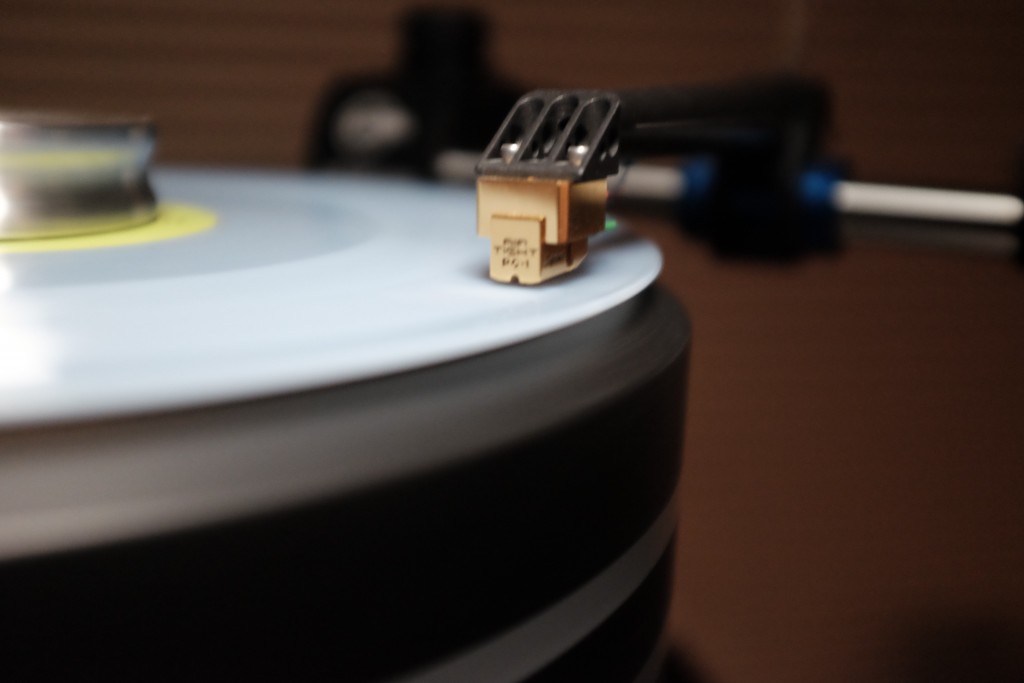
In my lead-up to this piece, I mentioned that I often accumulate more vinyl pressings of problematic recordings in search of a good sounding copy; Jethro Tull’s Aqualung is a good example. Some of the quirks in this recording were deliberate, e.g. the “Tannoy” effect (a/k/a the “telephone burble”) on the vocal parts of title track, which is a clever effect; but most copies seem to lack clarity or bass and there is considerable track to track variability in the sound quality. Some of it apparently had to do with adjusting to the acoustics of the large room the band recorded in–a desanctified church that was repurposed for the then-new Island studios at Basing Street. The sessions are credited to John Burns as engineer, who did a lot of work with Island in the era. (Some of his other work is very good).[1]
The various commercial releases of the record are all we have, however. Given the significance of this record—which was a break-out record for Tull and remains a benchmark in their repertoire—I thought it might be worthwhile to compare the sound of different pressings, something I routinely do at home in order to find a preferred pressing. This record has been re-mastered several times by third party audiophile labels over the years, which not only reflects its popularity, but reveals various approaches by different mastering engineers to extract the most power and musicality from the original recording. Warning: this is a long article.
The Early Pressings-
UK
The album was released in the UK as a Chrysalis record distributed by Island, and early copies bore the green Chrysalis label with a small Island “i” and lacquers showing 1u/3u.
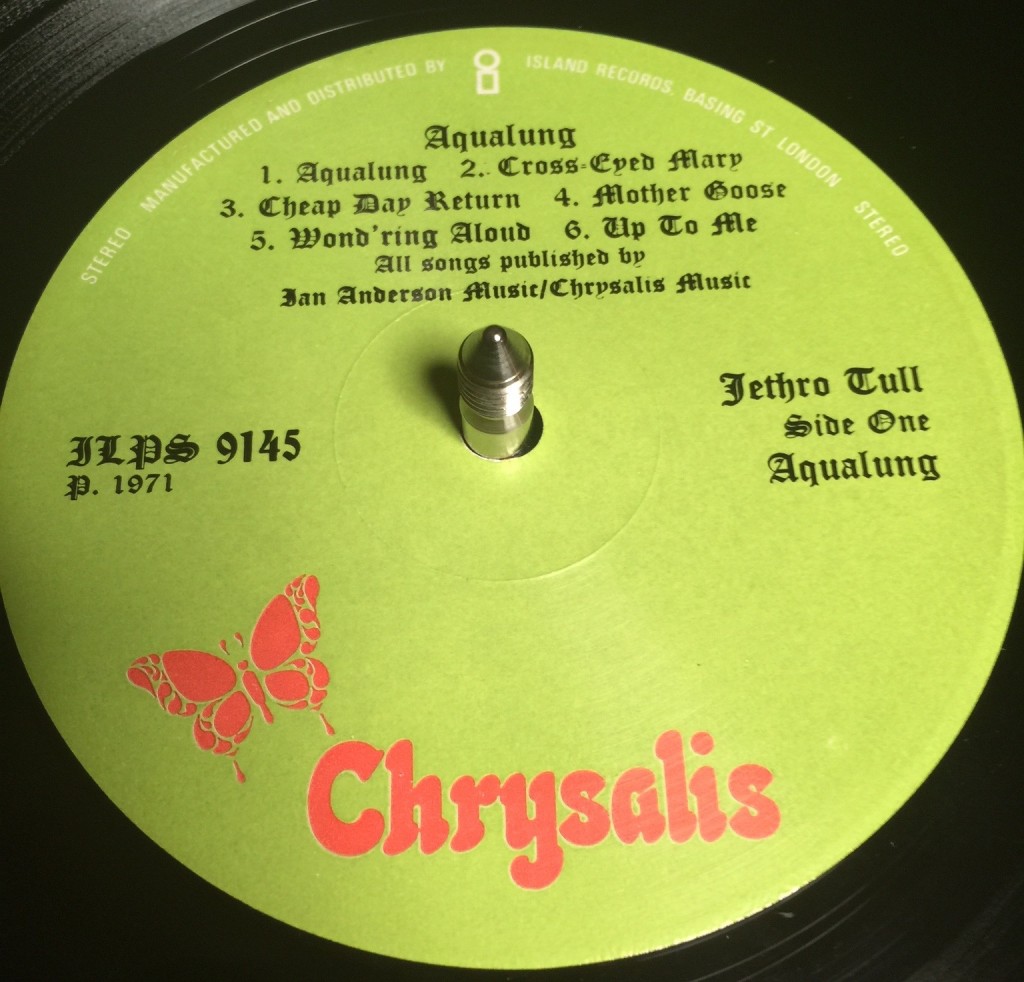
Some UK copies bearing the same inscriptions were released on the Island pink rim label. These inscriptions are characteristic of EMI manufactured records (the “u” denoting that the recording was mastered by a facility other than EMI).
This is not, in my estimation, a great sounding version of the record. There is very little bass, and the entire presentation is lacking in dimension. Once the guitar opens up on the title track, things improve and the drums get better, but the piano sounds “dinky.”
“Cross-Eyed Mary” has very little “breath” to the flute. “Cheap Day Return” is less demanding, the acoustic guitar and vocals are nice and clean. “Mother Goose” sounds better than the preceding tracks and the kick drum has some dynamics. “Wond’ring Aloud” has clarity, both in the voice and bass, but the piano seems to be too far down in the mix. “Up to Me” is just okay, the flute still lacks the sense of breath passing through the instrument but the percussive effects are pretty good.
Side 2 is a little better on the UK pressing. “My God” starts at a very low volume level which allows for the “kick” when the guitar riffs come in; this track and side seem more dynamic than side 1 and the flute seems to have a little more breath, but there is still no real deep bass. “Hymn 43” sounds like everything starts at “11” and there is little headroom; it sounds very “flat” i.e., lacking in dimension. The piano again sounds “plinky,” has no weight and no harmonic overtones. The track borders on the strident.
“Slipstream” has fine vocal and acoustic parts, and the “string tone” (apparently a Mellotron) is nice, but the track is not terribly dynamic.
“Locomotive Breath” has decent overall balance on the sound of the piano, but the instrument lacks weight. Once the song cranks up, the sound is punchier and is one of the best sounding tracks on the side. “Wind-Up” starts with a distant vocal and the overall sound of the band and drums is decent but once the guitar riffs kick in, it gets punchier, the vocal gets louder and the piano almost has harmonic overtones, but still lacks weight.
Sorry for the detailed notes, but this gives us (and you, the reader) a baseline.
U.S.
In the U.S., the album was initially released on Reprise.[2] The earliest copies in my possession are white label promos which were mastered by Allen Zentz and show a “1” with an indecipherable letter, possibly an “E” on side one; side two shows a clear “1 B.” The record was pressed at the Columbia Santa Maria plant, based on the faint backwards “S” inscription in the deadwax.
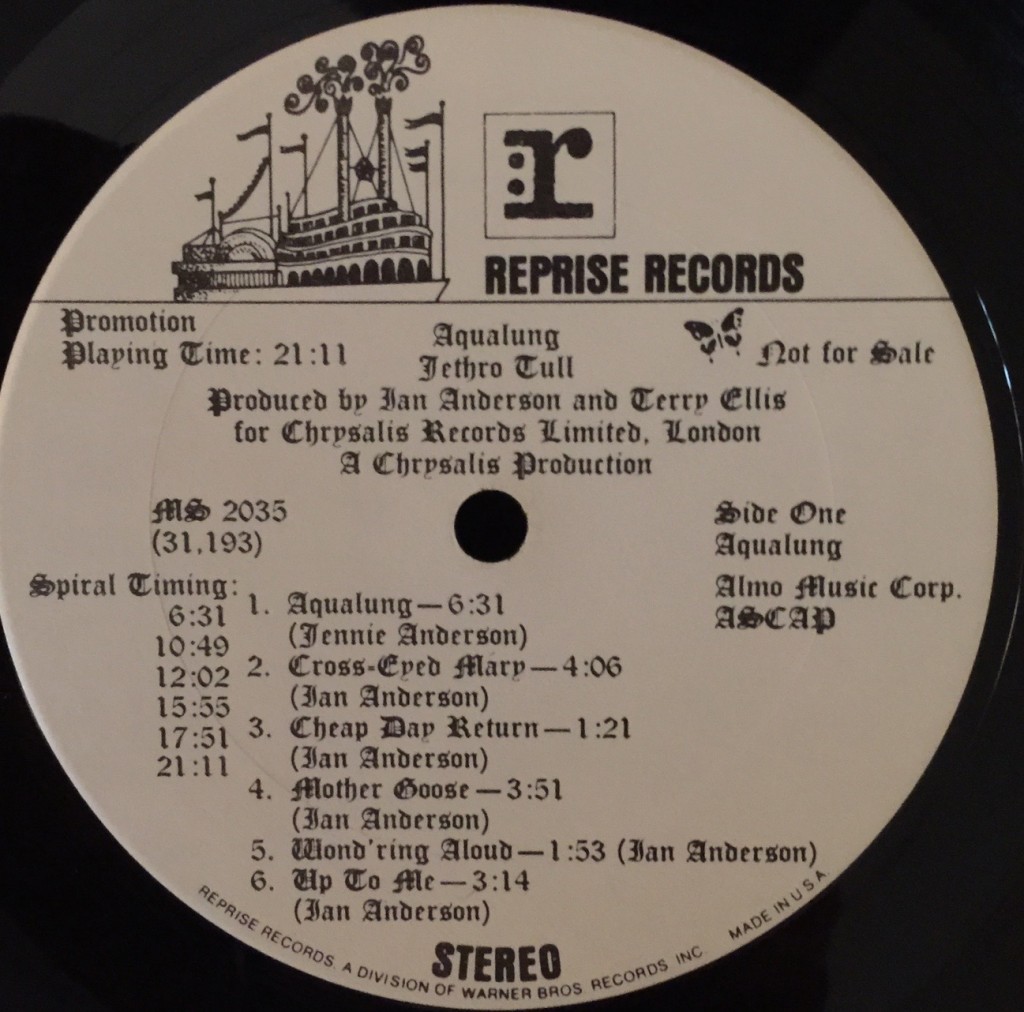
WLP
This record is far more “open” sounding than the UK pressing, and on the title track, you can hear more of the skin of the drums, but overall, the record still sounds a tad thin. The cymbals are easier to hear, with more distinct stick taps on the metal and a little more bloom to the cymbal sound as it rings, but the record still seems to lack bass. It is punchier than the UK pressing, though. “Cross-Eyed” sounds less “boxed-in” than the UK but still lacks real presence; on “Cheap Day” the voice is warmer and more present than on the UK and you can hear more of the string sound from the guitar. “Mother Goose” has much better kick drum sound and other percussion sounds (not sure if it is a tabla, or hand struck tom-tom, or something else, but it is noticeable here) and the voice really opens up nicely on the second verse. The piano in “Wond’ring” is more prominent and the voice is more present and upfront, but borders on the sibilant (not sure it is a bad copy since both of my WLPs sound this way and it is not annoying). The “string” tone is also better. “Up to Me” seems to suffer from some inner groove distortion (which is rarely a problem for me with a lateral tracker), but the percussive rattles are very crisp and clear. The track seems more dynamic than the UK copy. “My God” is much more dynamic sounding than the UK copy as is the rest of side 2 on the U.S. white label promo.
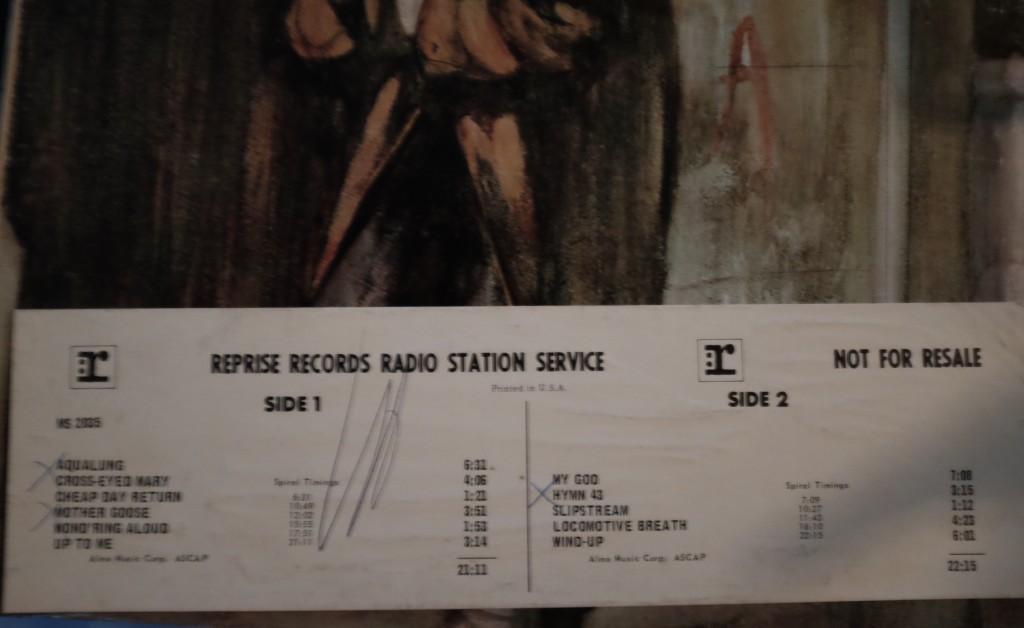
Some “Standard Issue” Reprise Pressings
I also have several “standard issue” Reprise pressings from the period, which I included in my listening sessions for several reasons.[3]
Here are a couple of quick notes on these: I have one copy with 1 C in the deadwax, apparently pressed at the Santa Maria plant which is very good; in fact it is pretty close to the WLP and shows the word “Stereo” at 6 o’clock on the label. Another copy, with a “T” in the deadwax (I believe this indicates Columbia’s Terra Haute, Indiana plant) a “3” in the deadwax, bears no “Stereo” legend on the bottom of the label and sounds less immediate.
The Old Mo-Fi
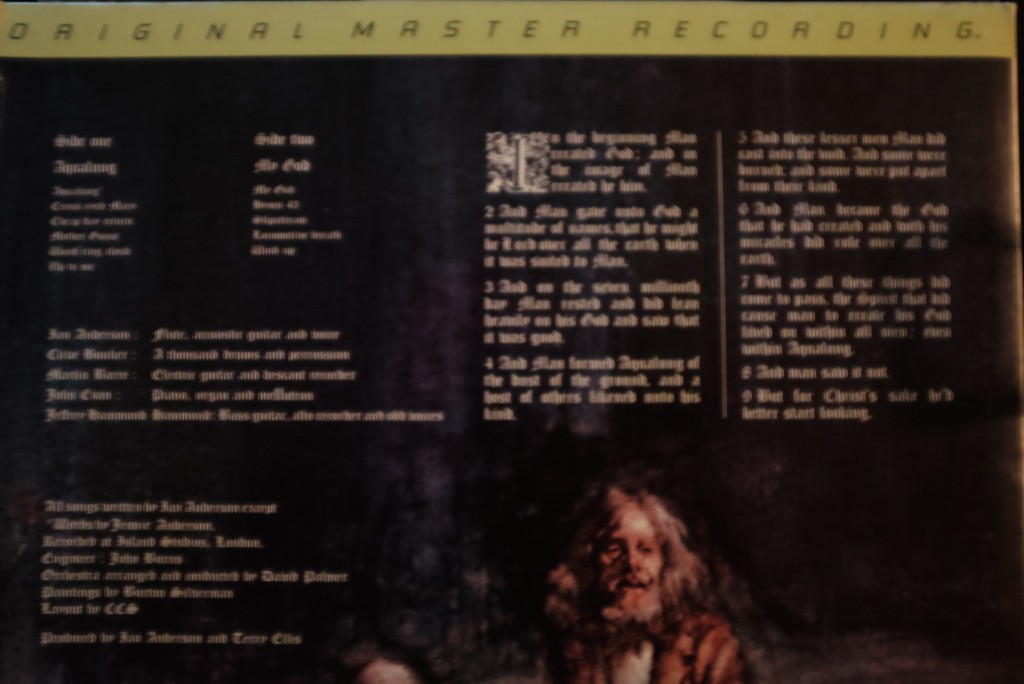
I bought the Mobile Fidelity version of Aqualung when it was released in 1981.
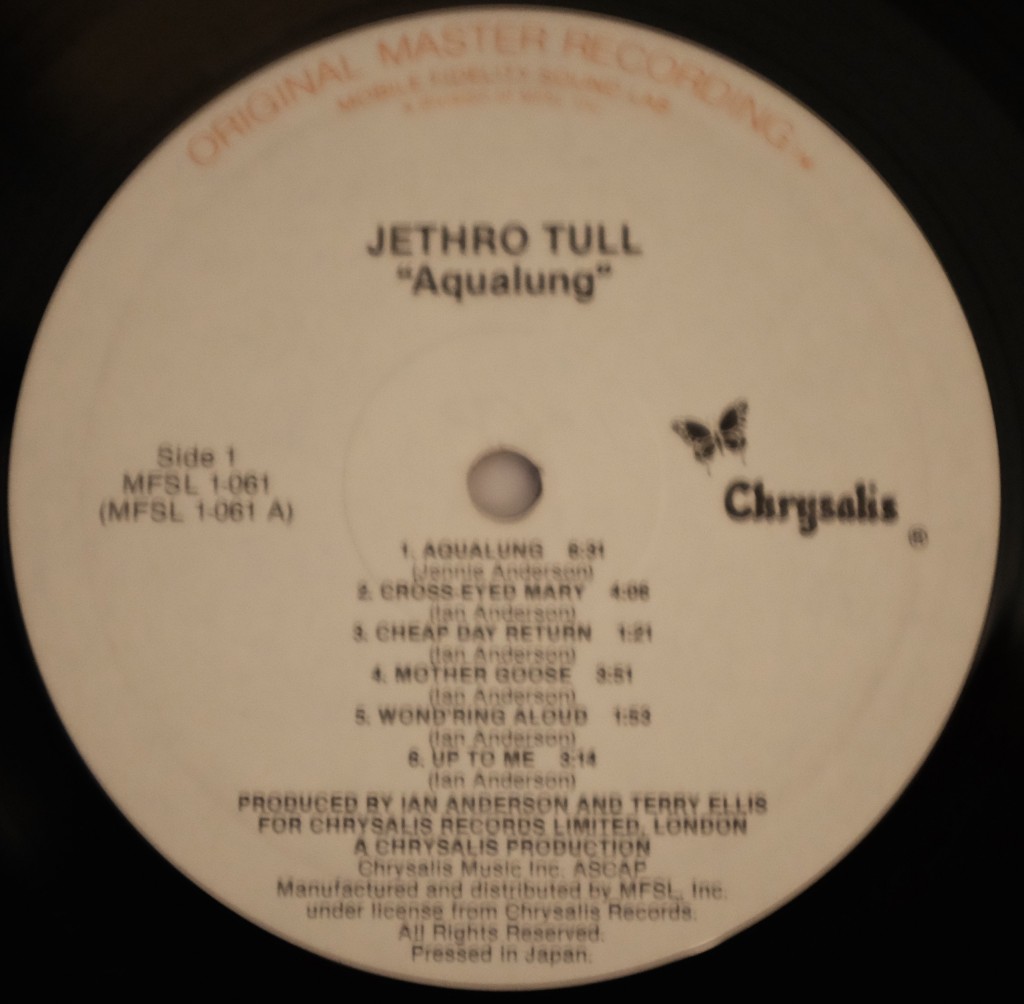
It has great, quiet surfaces, and is known for having a “tweaked” sound characteristic of many of the “old” Mo-Fi records.[4] This one is no surprise: it sounds like “bass boost” throughout the record, which gives the piano and acoustic guitar more weight, but the effect is a “heaviness” rather than true deep bass. The record is dynamic but the equalization gets annoying. It may work fine on a bass-shy system or for a listener that prefers this kind of tonal balance.
The DCC Re-Master
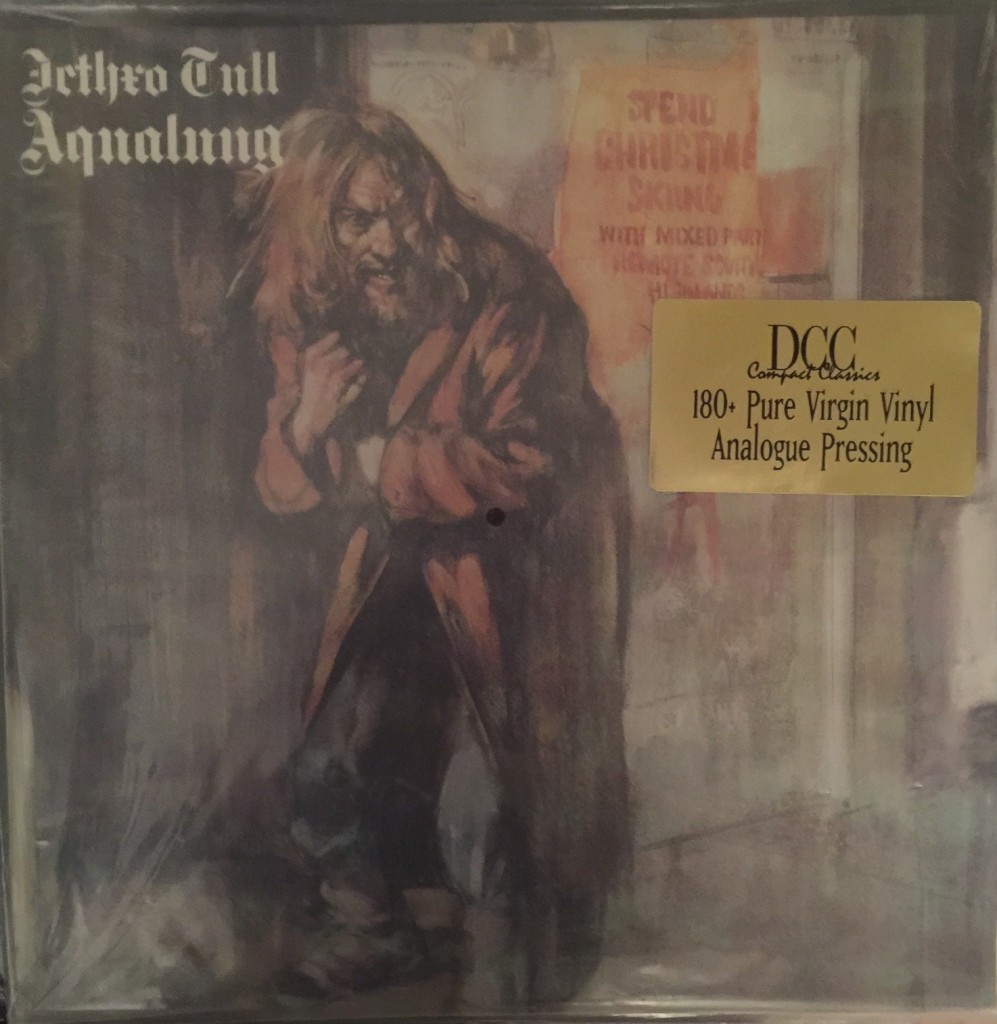
One of the highly regarded re-do’s of Aqualung was issued by DCC in 1997 and re-mastered by Steve Hoffman.
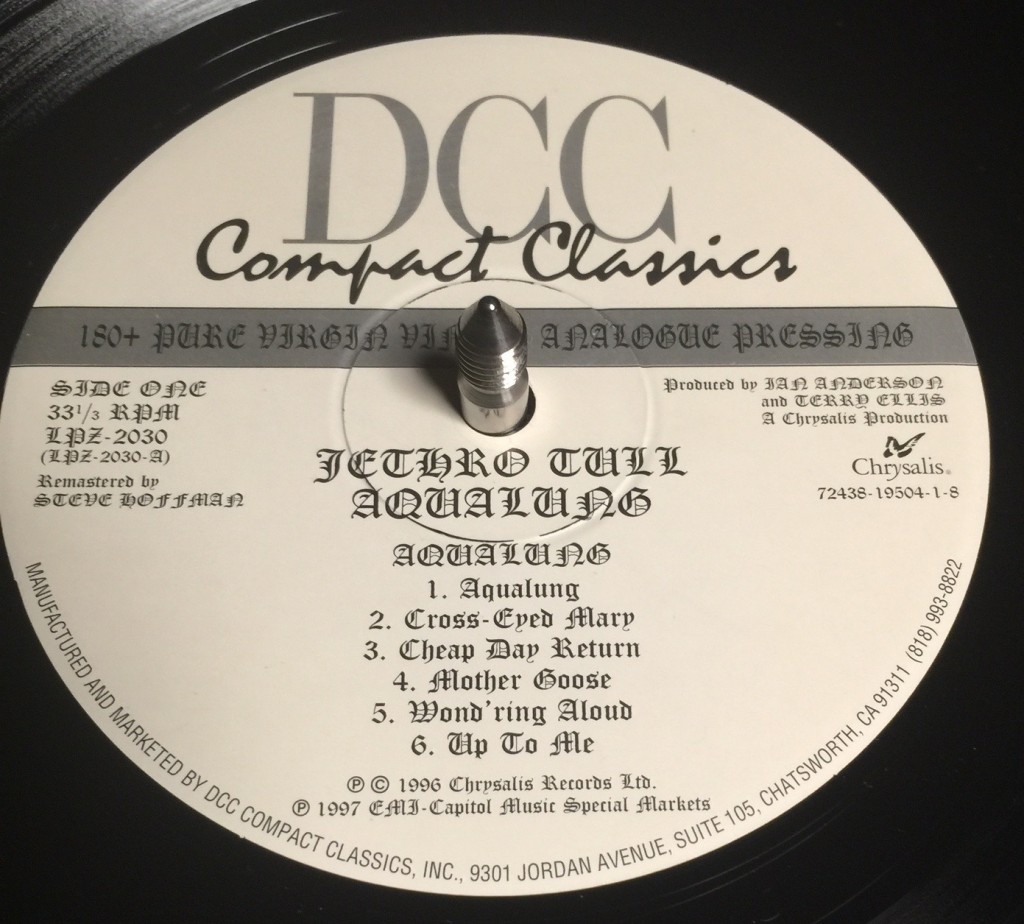
It is the virtual opposite of the old Mo-Fi in overall balance:
Far from being heavy or thick sounding, the record packs punch and in some cases, bests the WLP discussed above. When I compared the DCC to the WLP on a number of cuts, back to back, the WLP sounded a little harsher, but also packs punch. On the DCC, “My God” has real weight to the piano (finally)[5] and the cymbal splashes are easier to discern. There is also some “breath” to the flute. Flipping back to the WLP, the latter isn’t as “warm” sounding, and my personal preference would probably give the nod to the DCC, but the WLP has great texture on the acoustic guitars and when Martin Barre’s Les Paul blazes in, you know it! The DCC is long out of print, but you see copies for sale online.
Classic Records- 33, 45 and Clarity Vinyl
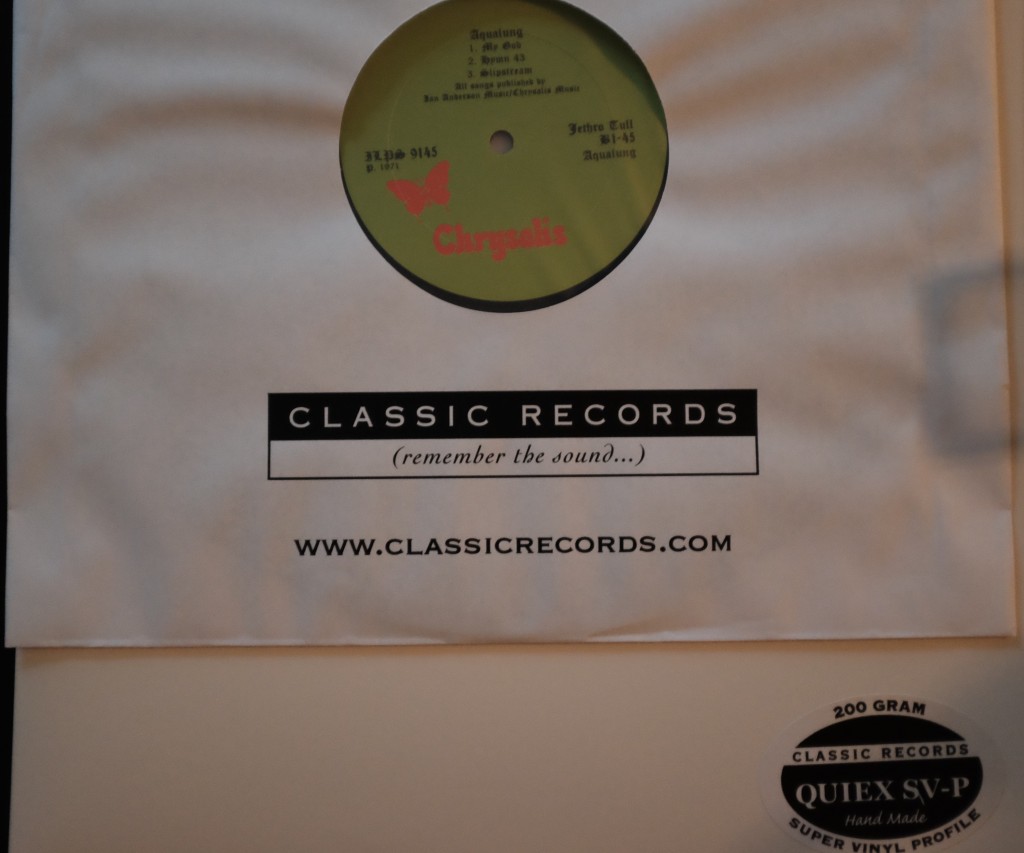
The Classic Records are presently out of print, but since Analogue Productions took over the brand, there is a possibility we will see the label resurface (Chad still has new old stock, as do various third party vendors). Given how master licensing usually works, I would presume that any “new issues” from the label will involve a fresh mastering, so what we are listening to here are older copies that are available, sometimes still sealed, on the resale market.
I started with the Classic 33 rpm (200 gram) from 2007 that was re-mastered by Chris Bellman of Bernie Grundman Mastering.
On “My God,” the piano doesn’t have the weight of the DCC but gives you more “air” at the top, which also carries over to the sound of the acoustic guitar- less weight, slightly more harmonic overtones. Overall, I don’t think the Classic 33 has as much “life” as either the DCC or the WLP. The title track has a lot of energy in the drums and sounds brighter to my ears. The piano on “Locomotive” has both weight and good harmonics. Compared directly to the DCC, the latter sounds a little duller or more rounded, but not unnaturally so (the Classic may in fact be a bit ‘tipped up’ at the top end).
Classic Records reissued the album again in 2009 as a 45 rpm record on so-called “Clarity” vinyl, a formulation that eliminated carbon black as an element[6] that was claimed to add distortion.
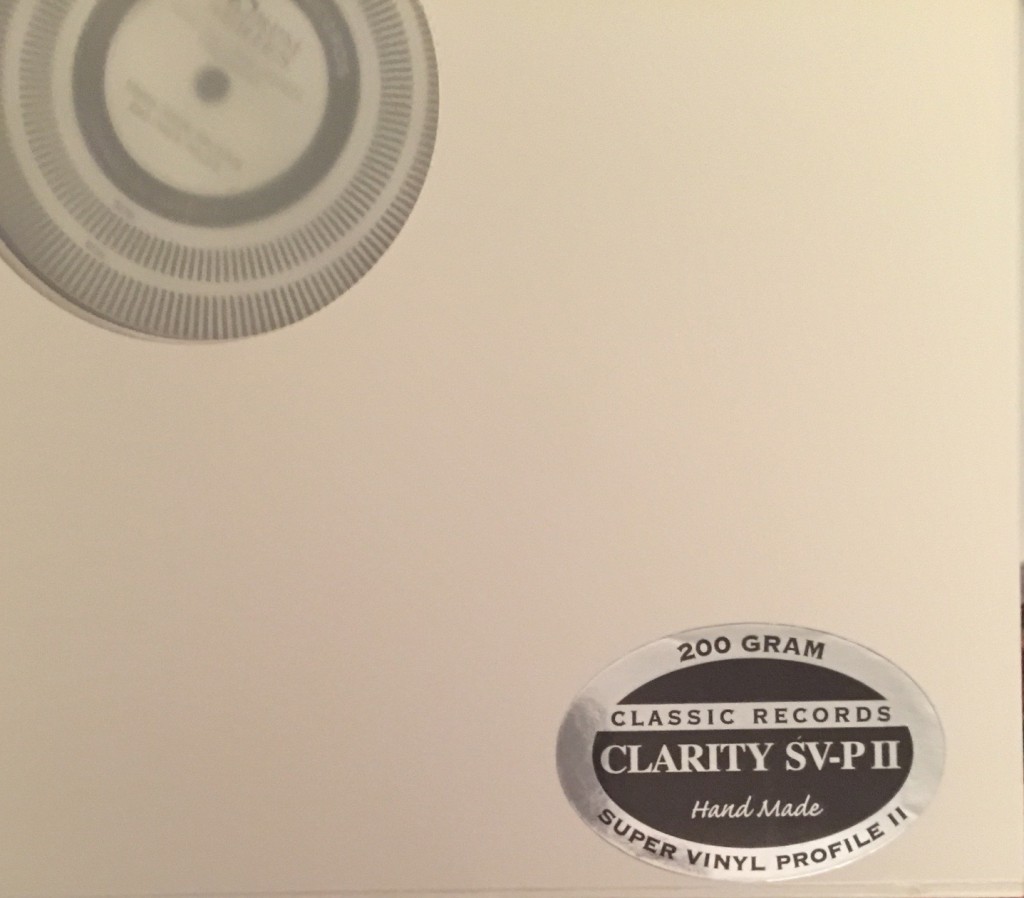
The faster rotation speed arguably[7] increases fidelity at the cost of much shorter playing times, spread out over multiple discs. Chris Bellman also did this cut.
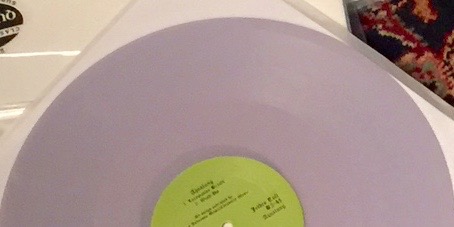
“Locomotive” had “air,” harmonic overtones and more sustain on the piano than the 33 rpm version. The DCC sounded more rounded by comparison. On “My God,” the guitar tone on the DCC was fantastic; the Classic 45 had a slightly brighter quality to the guitar, with more apparent high frequency information, but the piano seemed less weighty than the DCC.
On the title track, the Classic 45 presented the drums pretty effectively in “sound-staging” terms, with more front-to-back dimension. The DCC did not have as much apparent high frequency information, but was just as punchy, maybe more.
I’d almost say the difference between the Classic Clarity 45 and DCC is a toss-up depending on personal preference. Pricewise, the Classic 45 is quite expensive; the DCC isn’t cheap, but it is considerably cheaper in the resale market than the asking prices I’ve seen for the Classic Clarity 45 set.
Since I also had the Classic 45 version on the more “standard” Quiex black vinyl, I thought it would be interesting to hear the difference between the two formulations. The difference was not one of surface“noise” as such. Both had quiet surfaces, but in repeated comparisons of several different tracks on both Classic 45 versions, the Clarity did sound a “tad” better; a little more vivid and slightly less “reproduced” sounding.
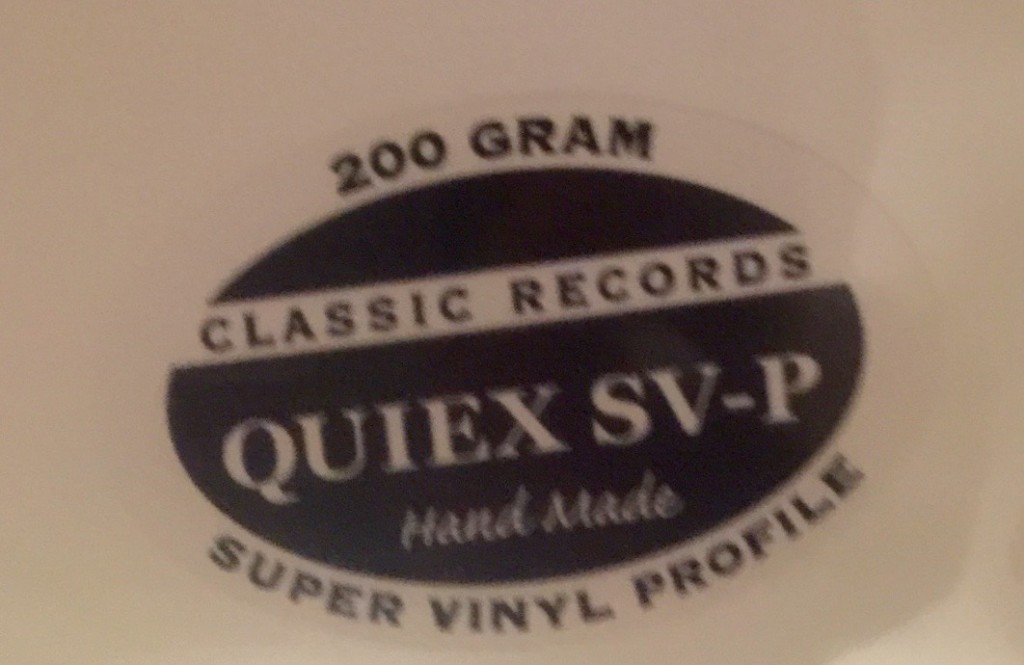
Steve Wilson Remix
Finally, I listened to the Steve Wilson remix, which derived from the multi-track tapes rather than the original stereo mix, and was originally released as part of a deluxe package. The vinyl record was released as a stand-alone product in May, 2015. Although the vinyl was drawn from a digital file,[8] that is not a reason to avoid this record. To the contrary, and despite my strong preference for older analog recordings, this record is pretty amazing. And it costs all of $20 in the U.S. as a stand-alone piece of vinyl (cheap, compared to the price of the original deluxe multi-media set in which it was originally offered).
Here’s what I heard: nothing that told me instantly that I was listening to a “bad” digitally sourced record. In some ways, this was not far away from the top copies reviewed above, and bettered them in certain respects because remixing the album changed things: more bass, drums that kicked and cymbals that were clear; the flute was very articulate. The record was also cut louder than the others, but the “murk” is also gone. It never got strident, although compared to the DCC or the Clarity 45, it had a sharper leading edge to notes. Probably a fair trade-off, given what the remix brings out; when you consider the price, it is a must have, even if you own or prefer some of the others. If you are just looking for a good sounding copy, with no fanfare in searching out the “right” pressing, this is probably the one. (But see my conclusions, below).
A Few Notes on Methodology and Listening Bias
One factor often ignored in making such comparisons is differences in the cutting level or volume. I tried to take this into account by using two different SpL meters while doing these comparisons, and found that the only record that was cut demonstrably “louder” was the Steve Wilson remix.
Another big variable comes down to personal sonic preference, which also relates to the particular system over which the record is being played; depending on the listener’s personal sonic preferences and the strengths or weaknesses of the playback system, one may prefer a particular pressing over another to satisfy their taste or complement the sonic “signature” of a given system. See System Notes for my own biases and system strengths and weaknesses.
All records played in this “shoot-out” were in a fairly high state of playing condition; each was cleaned using the methods described at some length here, by pre-cleaning using a point nozzle vacuum machine and a “finish” cleaning in an ultrasonic cleaning machine.
Song selection: although I originally chose to focus on a handful of representative tracks from the album to make the comparisons (identified in the detailed descriptions above), I wound up listening to most of the albums in their entirety in the process of making my notes for this piece.
Qualifications & Conclusions
Despite the seemingly comprehensive nature of this “shoot-out,” I’m reluctant to offer this as a definitive view of the ultimate Aqualung album for a number of reasons. Apart from issues of listener/system bias mentioned above, there are often pressing-to-pressing variations even among otherwise identical copies.[9] Moreover there are a vast number of issues from other countries, let alone reissues and re-masters from within each such country, that I simply could not cover. At best, I offer this as a rough map to some of the most notable pressings and re-masters which may help provide some guidance to buyers.
One other thing that I am listening for: the overall cohesiveness of sound. It’s great if a particular copy has outstanding midrange detail, but not if it seems exaggerated compared to the rest of the sonic spectrum. Sometimes, the original or early “standard issue” pressings are more “of a piece” than some audiophile re-masters; those re-masters can sound more modern, brighter or offer greater detail at the expense of overall cohesiveness. So, that’s a factor I take into account and identify where I can. Many times, these comparisons are not about “the best” in an absolute sense, but rather different shadings of the same sonic “picture.” But, at least that’s identifiable, and you pick your preference, knowing that the comparison may not be a “better/best” but “different.” That said, here’s where I come out on these various pressings:
The Steve Wilson remix is an absolute “no brainer”- the remix fixes a lot (not everything) about a problematic recording and does so without pronounced “digititis.” I kept thinking as I was listening to it, “oh, it is just barely on the edge of maybe getting edgy/nasty” but it never did. Instead, Wilson did a great job in bringing out in far greater relief, the details that were lost or buried in many of the pressings. And, for what it’s worth, I listened to the entire album again after doing all the other comparisons.[10]
As to the others, the WLP has been my go-to for a while, but with a full day of back to back comparisons, the DCC is once again in the top tier of re-masters of this record for me. And that Clarity 45 is no slouch, albeit at a price. My recommendation- find an early Reprise “standard” issue as described above, which closely matches the WLP. And buy the Wilson. The others- it depends on how you want to spend your time and money.
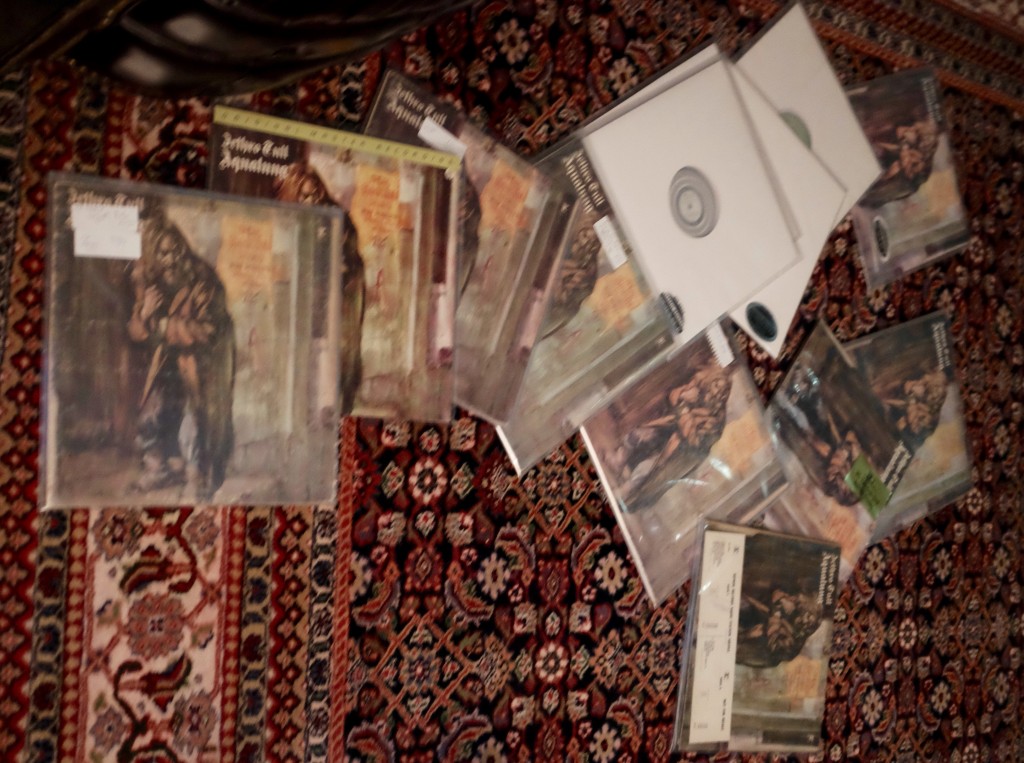
Bill Hart
June, 2015
____________
[1] An interview with Burns, included in the booklet accompanying the Steve Wilson remix, discussed below, indicates that this went beyond adjusting to the acoustics of the large room. There were also power cuts to the studio and switch-overs to a generator that interrupted or affected some of the takes. Burns’ candor in these notes is refreshing.
[2] It was reissued in the States in 1973 on the Chrysalis label, which continued to be distributed by Warners here until the mid-‘70s.
[3] Most of these early “brown” Reprise records are readily available in the used bins, so I thought it worthwhile to explore the less expensive old pressings along with the more costly ones, e.g. the “WLP” copies as well as the various “audiophile” issues.
[4] “Old” Mo-Fi and the current Mobile Fidelity are two entirely different critters.
[5] Some of this may simply be how the piano was miked or what the piano itself sounded like. Piano is notoriously difficult to record well, and I’m no expert on the recording aspect, but I know what a grand piano can sound like- I’ve had a big, old Bösendorfer (which sounded great as long as it stayed in tune, which it didn’t) and a vintage Erard (another big antique grand). Both had magnificent tone, weight and the Bösendorfer in particular had ethereal high notes (when in tune).
[6] One justification for adding carbon black to thermoplastic resin was to change the conductivity of the record to prevent the attraction of dust, which, once driven into the grooves, creates noise. See, e.g. “Conductive phonograph record containing thermoplastic resin and carbon black,” U.S. Patent Office, Aug. 22, 1961, H.B. Miller No. 2,997, 451 (filed March 7, 1957 and describing prior art). It was precisely the electromagnetic properties of black vinyl that Classic Records claimed its Clarity formulation eliminated. Another reason was that the black better concealed “plate out” problems, see Khanna, S.K., “Record Materials, Part III: Vinyl Compound for the Phongraph Industry,” Vol. 25, No. 10/11, Journal of the Audio Engineering Society (Oct/Nov. 1977). The effect of recycled vinyl cannot be overlooked either. This subject is better suited for a separate article.
[7] I have many 45 rpm re-masters that sound fantastic, but think that this is only one factor among many. The highly regarded Music Matters Blue Notes were, for a time, cut at 45 rpm, but have returned to 33 rpm using an improved mastering chain.
[8] The multi-tracks were transferred to digital and then remixed. Wilson’s notes accompanying the disc indicate that he tried to be faithful to the original album while getting more tone and clarity. Wilson also indicates that he pulled some instruments closer to center from extreme left or right and tried to increase the audibility of some of the details that had gotten lost in the original mix.
[9] And, there are differences among pressing plants. I will attempt to provide an overview of the various pressing plants used by Warner/Reprise as part of a “Further Reading” piece, similar to the article, Further Reading and Reference Materials: Island Pink Label (and early pink rim) era.
[10] For what it is worth, the Wilson was not a complementary reviewer copy- I paid for it; the others I have owned for a while and in some cases, for decades.